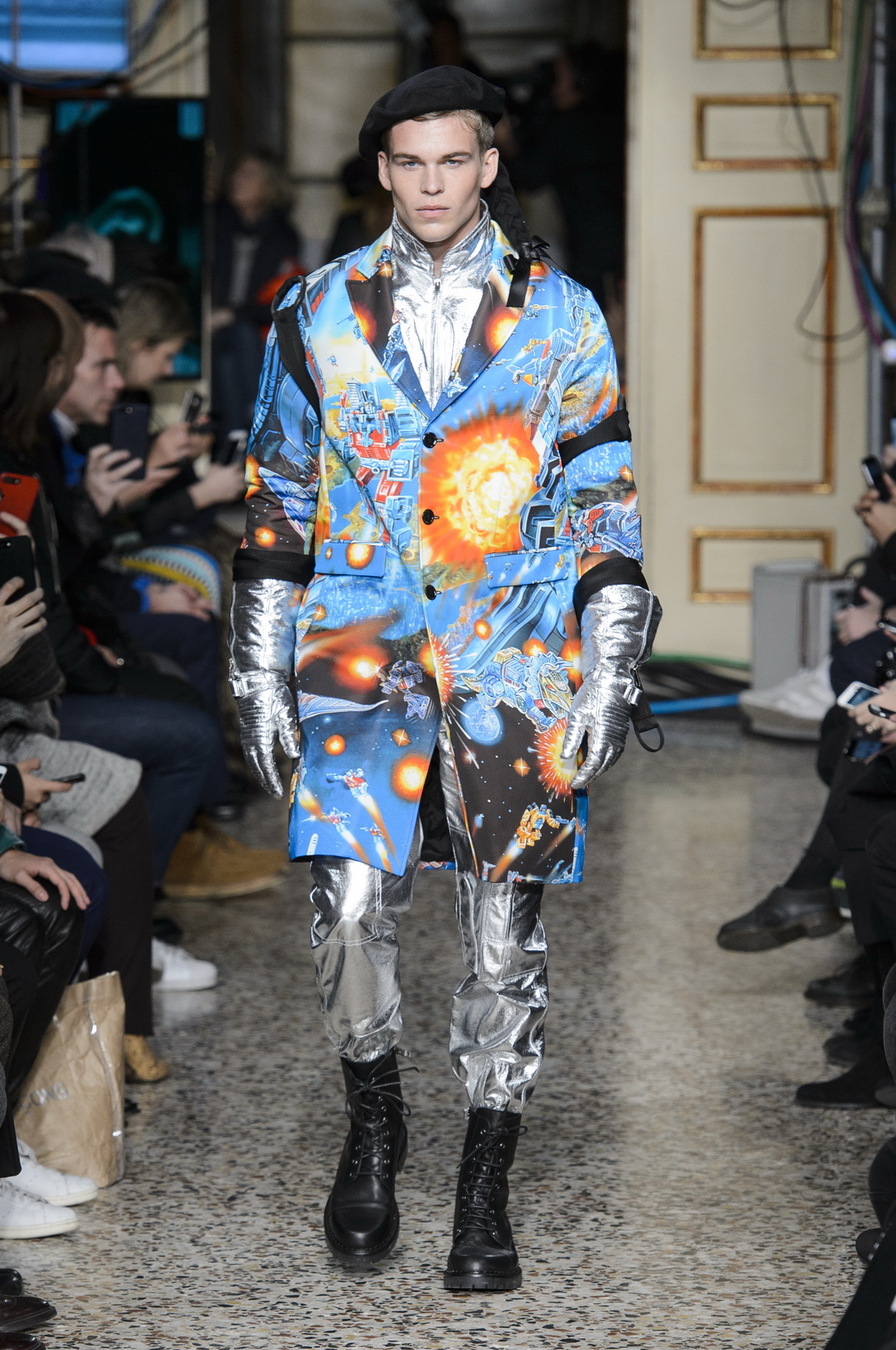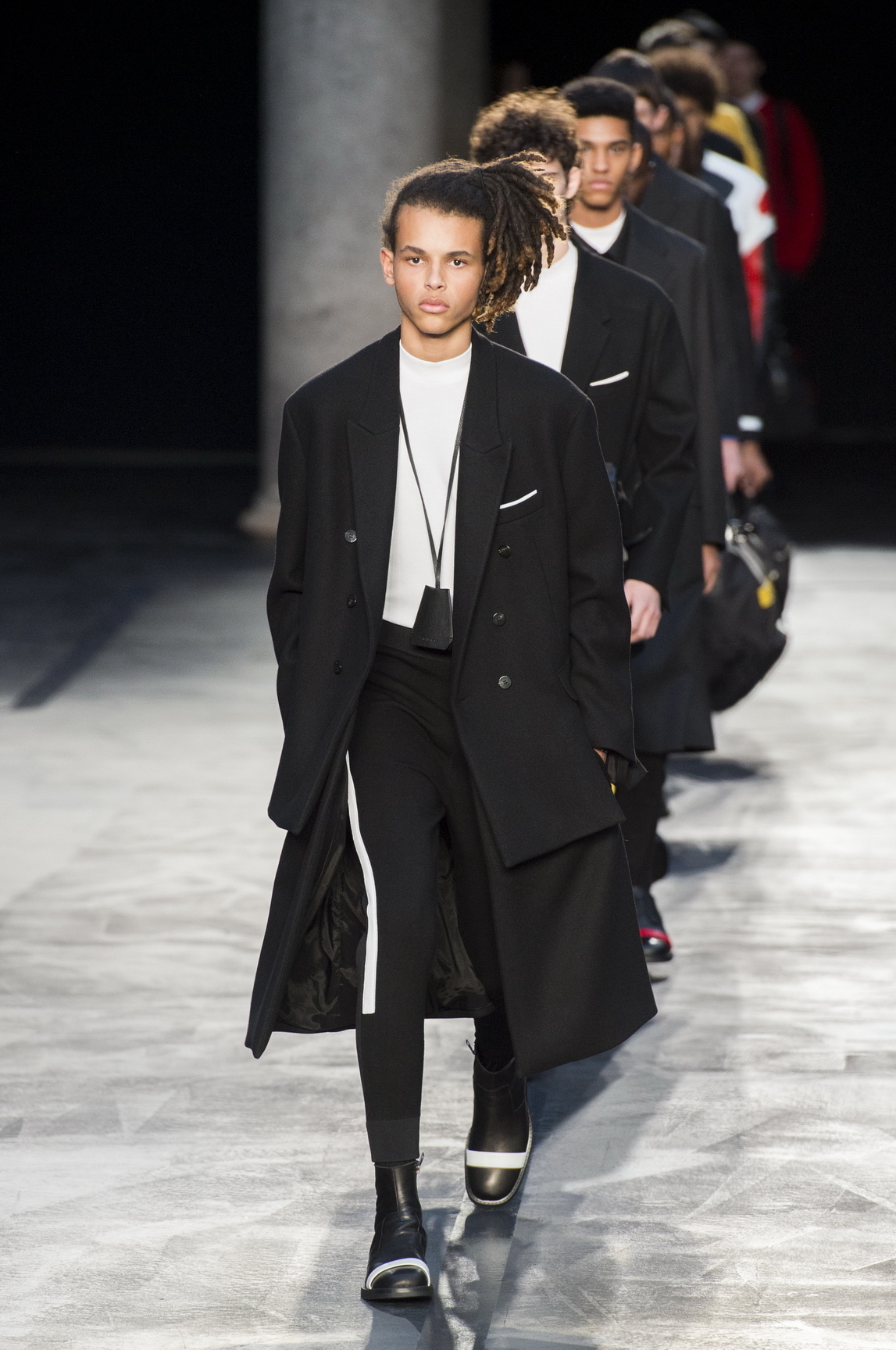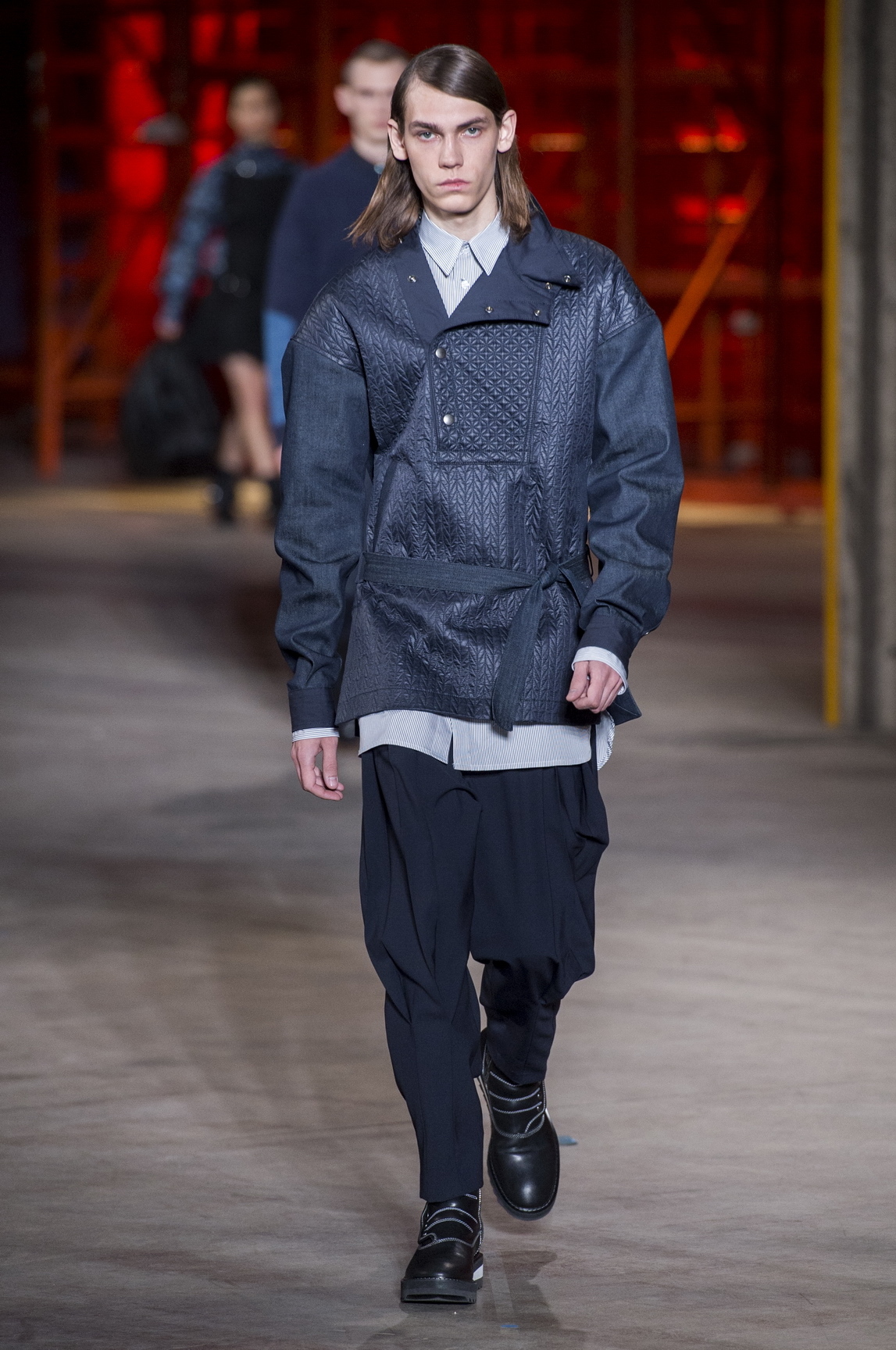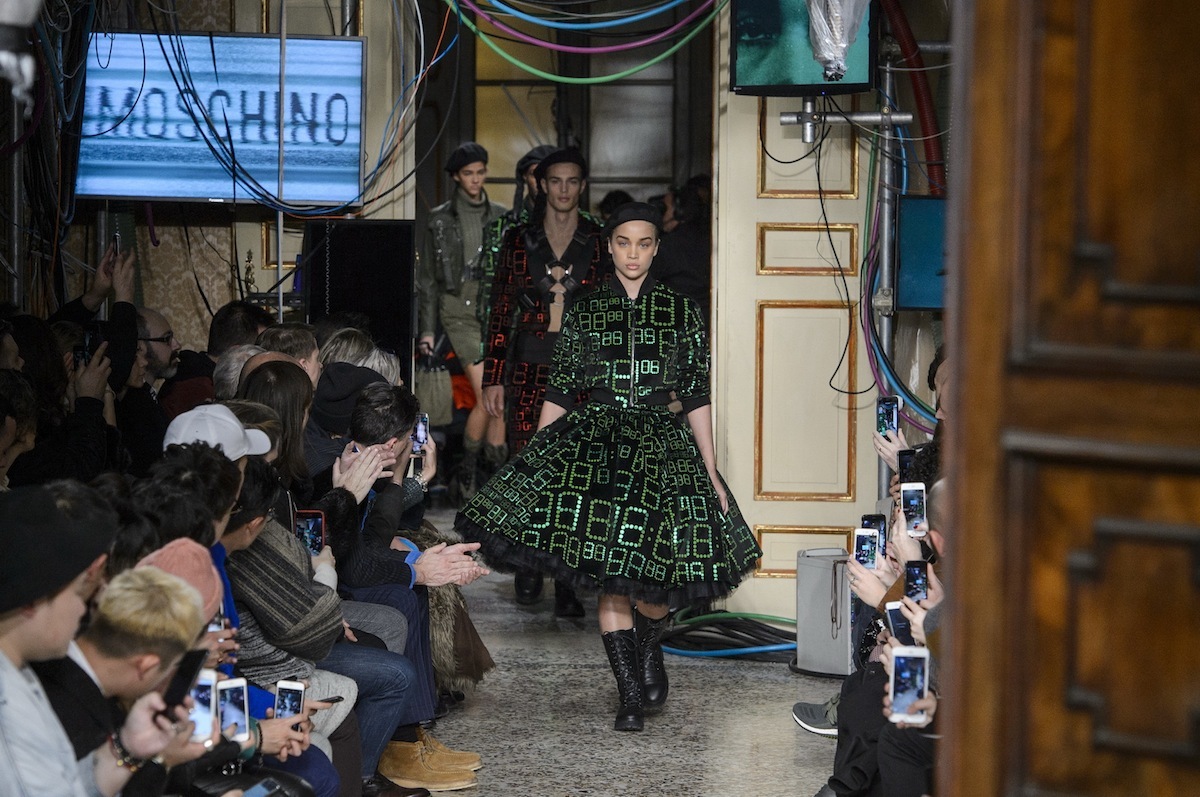With less than a week to go to Donald Trump’s inauguration, the Milan men’s shows had to start out on a reflective note. “My country’s in the toilet, but when my country’s in the toilet the world is in the toilet,” Jeremy Scott said after his most accomplished Moschino men’s collection to date. “We have to fight: we have to fight for beauty, we have to fight for rights, we have to fight for everything we believe in, because it’s being ripped away from us.” The American designer painted flowers onto army drill cloth as a sentiment of hope, and lifted angelic frescos onto garments, arbitrarily hiding them in black paint as a metaphor for the political situation his country and its surrounding world now find themselves in. “I’m trying to find any beauty that you can and almost making emblems and totems of them so you can wear them on your beret or on your shoulder, if you will,” Scott explained, referring to his bejeweled army hats created in collaboration with Judy Blame, whose early work also saw a well-timed revival at Sibling, which he styled last weekend in London. Sure Scott’s political spectacle was literal, but populist times call for simplified measures, and in Moschino’s unmistakable anti-Trump protest march the designer reminded his audience that the fight isn’t over yet.

“It’s very post-apocalyptic — but there’s still hope! Everything is going to be alright. We have to have believe, we have to have hope, we have to live in hope,” Scott said. “Within the fight we can find a beauty. Our beauty is people feeling motivated and active, and people having a voice and taking command of their voice, and realizing that yes — at least for us in the United States — call your congressperson every day. Program their number into your iPhone and when you’re at Starbucks waiting for your coffee, guess what, don’t look at Instagram. Call. Your. Congressperson. Tell them you will not accept this, you do not want them to vote that way, you do not appreciate that. That’s what we should do,” he insisted. “We all can make a difference and we have to. It’s been apathetic and that’s the one gift that we’re getting, hopefully: activation. Hopefully people will take that call to be real and serious and make a difference. That’s all I can hope.” In all its dystopia — the baroque surroundings of the palazzo venue covered in cords and scaffolding — the Moschino show had just the uplifting effect Scott wanted to convey. You left feeling fit for fight and reminded that as Friday’s inauguration approaches, the battle is far from lost.

“This is a collection about the different tribes of Versace men, and the powerful positivity that can happen when men from different places, different cultures join together,” Donatella Versace, who made a swift escape after her show, said in her show notes. The look was far more austere — stark tailoring and sleek, almost fetishized streetwear — but the bottom line was no different from that of Moschino: Jam, Heal the World, “it don’t matter if you’re black or white”, to put it in the 1991 lyrics of Michael Jackson’s Dangerous album, the iconic cover to which most certainly had to be the inspiration for the print on a blazer that closed the Versace show. Gianni Versace designed costumes for the Dangerous Tour, which marked the most political era of Jackson’s career. This is when he dedicated himself wholeheartedly to fighting the global conservative mood borne out of Reagan’s 80s and into Bush Senior’s early 90s —even if liberal pop stars still posed for pictures with Republican presidents back then. The political tension of that era is so brilliantly portrayed in shows like Dynasty where the struggle between American conformist values and the post-70s thirst for individual expression takes center stage.

That reference appeared throughout the spring/summer 17 women’s shows — most notably at Balenciaga and Saint Laurent — practically predicting the shock fall-out of the presidential election weeks later, and on Saturday of fall/winter 17 men’s shows in Milan the 80s were still alive and kicking. “There was that whole 70s moment, so obviously it’s a progression thing: 70s leads into 80s,” Neil Barrett reflected after a nostalgic — and splendid — collection, which dealt with his youth studying at Central Saint Martins and living in 80s London. “This progression of tastes rolls with the times, so obviously you’re attracted to certain things. For me they were wonderful times, they were creative times, I was free to do whatever I wanted. In Britain at that point you didn’t even have to pay to go to university, you just had to be their own talent. At that moment in time I could go out all night, go to all the concerts and just have the best time. For me, it was my heyday. I was finding myself. It was a wonderful period.” Barrett imagined his look back then in a contemporary reincarnation, feeding his favorite references from the time — The Cure, Siouxsie and the Banshees, Echo and the Bunnyman, and Ray Petri’s Buffalo — into a new take on his own 80s uniform.

“I bought an oversized drop-shoulder jacket and wore with it a kilt or a skirt, and leggings, and big boots,” he reminisced. “I wanted to try and recreate that, but I thought, how do I do that for today? I’m not going to wear a skirt — I’m too old. So I extended the jackets, making them almost like a coat, which gives you that look of that period. I liked Ray Petri and that whole gang thing, so I tried to make a cast that had that same feel, but not just with Puerto Rican and black people, but people from across the world to create that sense of an eclectic gang.” Barrett’s nostalgia wasn’t corny or forced, but an honest and natural — and perhaps subconscious — reminder of times not so dissimilar to the social and political climate in which we now find ourselves. They say creativity blossoms in times like these, and for the designers of Milan, having already lived through the 80s wasn’t going to stop them from fighting those battles all over again. The title of Andreas Melbostad’s collection for Diesel Black Gold, Urban Ninja — which incorporated elements from Japanese martial arts uniforms into the contemporary urban one — kind of summed up that fighting spirit, and it wasn’t far off at Philipp Plein’s launch of Plein Sport, either, where a motivational speaker followed the German designer’s own motivational speech before buff war machine body builders strutted their stuff in Plein’s new sportswear line.

Credits
Text Anders Christian Madsen
